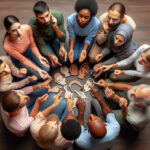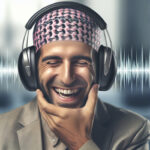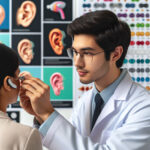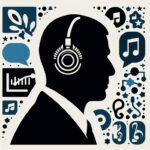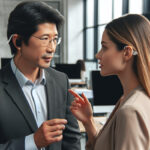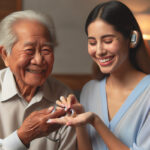This 30 Second Technique is Shockingly Effective
Deaf Impaired Athletes: Inspirational Stories of Overcoming Challenges
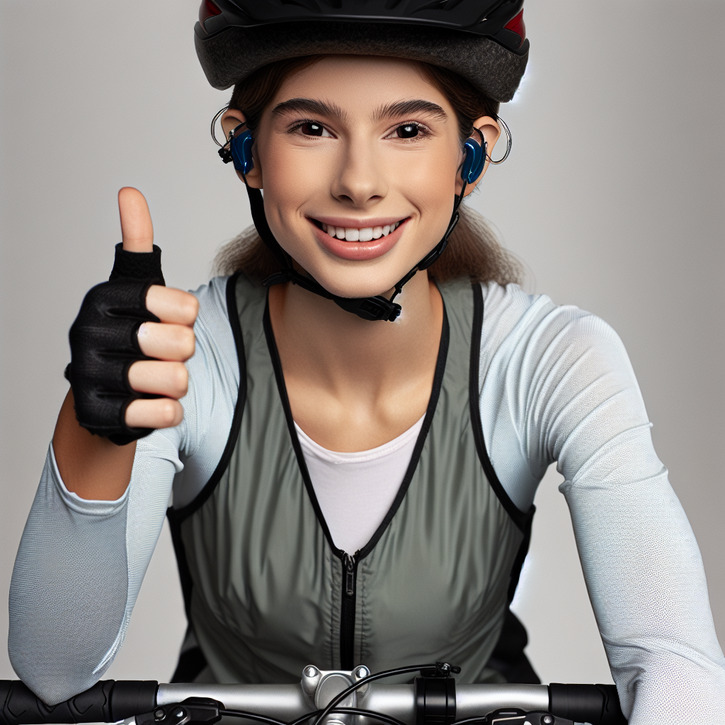
Introduction to Deaf Impaired Athleticism
Welcome to a world where the sound of victory is seen rather than heard. In the realm of sports, deaf impaired athletes have long been pushing boundaries, challenging perceptions, and inspiring countless individuals both within and outside the deaf community. Deaf impairment in sports isn't just about the absence of sound; it's about the presence of determination, skill, and an indomitable spirit. These athletes' journeys are marked by their ability to adapt and excel in environments designed for the hearing.
The path of a deaf impaired athlete is forged with unique challenges and remarkable triumphs. From mastering non-verbal communication to overcoming societal stereotypes, these individuals redefine what it means to be an athlete. They are not just competitors; they are trailblazers inspiring change and breaking down the barriers that once seemed insurmountable. Their stories are testaments to the power of perseverance and the human spirit's capacity to overcome adversity.
The Pioneers of Deaf Sports
William "Dummy" Hoy was a trailblazer in baseball, shattering misconceptions about deaf athletes' capabilities. Despite facing communication challenges, Hoy's legacy lives on as he became one of the most accomplished players of his time, even purportedly prompting the use of hand signals for strikes and balls. His impact extended beyond the diamond, paving the way for future generations of deaf impaired athletes in team sports.
Gertrude Ederle swam into history in 1926, becoming the first woman to cross the English Channel. Her feat was all the more remarkable as she was partially deaf. Ederle didn't let deaf impairment dampen her spirit; instead, it fueled her determination. Her extraordinary achievement stands as a testament to the limitless potential of deaf impaired athletes.
Derrick Coleman defied the odds to become the first legally deaf offensive player in the NFL. His journey to the pinnacle of American football, culminating in a Super Bowl win with the Seattle Seahawks, is a beacon of hope and a powerful example of deaf impairment not defining an athlete's career. Coleman's success is proof that with the right support and determination, the end zone is never out of reach.
Overcoming Communication Barriers in Team Sports
Innovative coaching strategies have been pivotal in integrating deaf impaired athletes into team sports. Coaches and players alike have embraced visual signals and sign language to bridge the communication gap, ensuring that talent, not hearing ability, dictates an athlete's potential. This inclusivity enriches the team dynamic and fosters an environment where everyone can contribute to their fullest.
Team sports are built on trust and understanding, and deaf impaired athletes exemplify these values without relying on spoken words. Their presence on a team can strengthen bonds as players learn to communicate in more meaningful ways, fostering a deeper sense of unity. This silent yet profound connection can sometimes give teams an unexpected edge, allowing them to function seamlessly in high-pressure situations.
On the field, sign language and visual cues become the language of play for deaf impaired athletes. These adaptations are not merely functional; they are transformative, enabling players to engage with the sport on equal footing. The integration of these communication methods showcases the adaptability of sports and the potential for inclusivity at the highest levels of competition.
Deaf Impaired Athletes in Individual Sports
Golfer Kevin Hall, known for his 'silent focus,' has turned his deaf impairment into a unique advantage, allowing him to concentrate with unmatched intensity. His story is one of resilience and a reminder that the quietest players can make the loudest impact on the course. Hall's achievements challenge the perception of what deaf impaired athletes are capable of in the world of sports.
Olympic medalist Terence Parkin has become an icon in the swimming world, demonstrating that deaf impairment is no barrier to success in the pool. Parkin's remarkable journey to the podium has been an inspiration to aspiring athletes, proving that with dedication and hard work, the roar of the crowd is felt, not heard. His legacy is a powerful narrative of triumph over adversity.
Lance Allred, nicknamed the 'Beethoven of the Basketball Court,' became the first legally deaf NBA player, showcasing his exceptional skills in a sport where communication is key. His journey through the challenges of professional basketball has inspired many to look beyond their limitations. Allred's story is one of courage, determination, and the relentless pursuit of one's dreams.
Adaptive Equipment and Technology for Deaf Impaired Athletes
Hearing aids and cochlear implants have revolutionized the way deaf impaired athletes experience their sports. These devices, tailored to withstand the rigors of physical activity, allow athletes to receive auditory input, enhancing their performance and safety. The thoughtful integration of such technology is crucial in creating a level playing field for all competitors.
Visual and vibratory alert systems have become game-changers in competitions, ensuring that deaf impaired athletes receive start signals and other crucial notifications simultaneously with their hearing counterparts. These innovations demonstrate the power of technology to create equitable conditions for all participants, fostering a more inclusive sporting environment.
The role of technology in sports for deaf impaired athletes cannot be overstated. From specialized training apps to equipment designed for non-verbal communication, tech is continually leveling the playing field and opening new doors for these athletes to shine. This ongoing evolution promises a future where limitations are seen not as obstacles but as opportunities for innovation.
Training and Fitness Routines for Deaf Impaired Athletes
Training regimens for deaf impaired athletes often require customization to accommodate hearing loss. Coaches and trainers tailor workout plans that emphasize visual cues and tactile feedback, ensuring that athletes remain in sync with their fitness goals. This personalized approach is essential for maximizing performance and keeping athletes engaged.
Mental resilience is a cornerstone of athletic success, particularly for deaf impaired competitors. Visualization techniques become a powerful tool in their training arsenal, allowing them to mentally rehearse their moves and strategies in silence. This mental training not only enhances performance but also fortifies their psychological endurance.
Safety is paramount in any athlete's training routine, but for deaf impaired individuals, it takes on added significance. Modifications to alert systems and the inclusion of visual signals in gyms and training facilities are crucial measures that ensure these athletes can train effectively without compromising their well-being. These considerations foster a safe and productive training environment.
Legal Rights and Advocacy for Deaf Athletes
The Americans with Disabilities Act (ADA) has had a profound impact on sports, mandating equal access and accommodations for deaf athletes. This landmark legislation has paved the way for countless individuals to pursue their athletic dreams without facing discrimination based on their hearing impairment. Understanding the ADA's provisions is crucial for ensuring these rights are upheld.
The fight for equal access in sports continues, with deaf athletes and advocates pushing for greater inclusivity and opportunities. Their efforts aim to level the playing field, ensuring that deaf impaired individuals have the same chances to excel in athletics as their hearing peers. This ongoing battle is a testament to the community's resilience and determination to enact change.
Organizations like the Deaflympics and the USA Deaf Sports Federation have been instrumental in championing the rights of deaf athletes. These groups provide a platform for competition, advocacy, and community, highlighting the incredible talents of deaf impaired sportsmen and women. Their work is essential in fostering a more inclusive future in sports.
Conclusion: The Road Ahead for Deaf Impaired Athletes
The achievements of deaf impaired athletes resonate far beyond the podiums and playing fields. They serve as a beacon of inspiration, breaking down barriers and challenging the status quo. As we celebrate their successes, it's important also to recognize the ongoing challenges they face and the importance of continued support and advocacy.
Support systems and communities play an invaluable role in the lives of deaf impaired athletes. From coaches and teammates to family and friends, these networks provide the encouragement and resources necessary for athletes to thrive. Fostering strong community ties is essential for nurturing the next generation of deaf sports talent.
Encouraging future generations of deaf impaired athletes begins with the stories we share today. By highlighting the accomplishments and challenges of these remarkable individuals, we pave the way for a more inclusive and equitable sporting world. Let's continue to champion their cause and cheer on the deaf impaired athletes as they scale new heights and redefine what's possible in the world of sports.

Laura Henderson is a health enthusiast and has been interested in healthy and natural methods of eliminating tinnitus and restoring natural hearing for many years.


